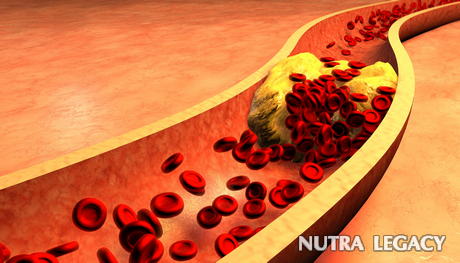How Does a Plaque Form in Blood Vessels?

- Blood vessel plaque is a major cause of coronary heart disease
- Atherosclerosis can be a result of plaque buildup
- The plaque may cause a blood clot that could either break up (to improve poor circulation) or it can cause a rupture
Plaque forming in blood vessels, and particularly in the arteries, is a major cause of coronary heart disease.
The heart is a pump. It is strong and muscular, and it needs to be because it pumps blood to the extremities of your body all day, every day. Like any other muscle, the heart needs to be supplied with blood so that it can receive the oxygen and other nutrients it needs in order to operate properly. The heart gets the blood it needs from arteries called the coronary arteries. Like other blood vessels in the body, a coronary artery may form plaque.
When body blood vessels become narrowed or blocked by plaque, they can become clogged or hardened. This is a condition known as atherosclerosis. Atherosclerosis is caused by the buildup of plaque (also known as fatty deposits) and cholesterol on the artery’s inner walls. The resulting narrowing then may restrict the flow of blood to the heart.
Without adequate oxygen or nutrients, the heart begins to “starve” as it is deprived of the supply of blood it needs to operate properly. The result can be a condition called angina, or chest pain. If a coronary artery becomes completely blocked, it is likely to result in a heart attack, which can cause injury to the heart, and even death.
Normal, healthy arteries are effectively tubes through which blood can freely flow. The walls of arteries are usually smooth and flexible. The buildup of plaque in blood vessels can begin at a very early age. Prior to teenage years, blood vessels walls may begin to display streaks of fat. As age progresses, the fat may build up, causing damage to the walls of the blood vessel. Blood vessels will attempt to heal themselves by releasing chemicals that tend to make their walls stickier. The result is that other substances and nutrients moving through the blood vessel tend to stick to the wall, such as proteins, calcium and waste products, and arteries may begin to look like abnormal blood vessels.
The fat that forms on blood vessels walls, together with other substances, forms the material known as plaque. As time moves on, the inside of the blood vessels develops areas of plaque of differing sizes. The plaque deposits are often covered by a hard “cap” on the outside, and are usually soft on the inside. If the cap tears or cracks, the softer, fatty tissue exposed. The result is that platelets (particles that aid clotting) are attracted to the tear or crack and form blood clots around the plaque. This can result in the blood vessel narrowing even more.
The blood clots may break down, easing the narrowing. However, if the clot causes a blockage in a coronary artery, the heart’s blood supply to be compromised or even blocked altogether. This is known as coronary occlusion or a coronary thrombus and may cause acute coronary syndrome. Acute coronary syndrome is associated with the sudden rupture of plaque within the coronary artery, angina and heart attack. The length of time that blood flow is restricted to the heart determines the severity of the damage caused to the heart. It is a potentially life threatening condition that requires immediate care.
The information supplied in this article is not to be considered as medical advice and is for educational purposes only.
|
2 Responses to “How Does a Plaque Form in Blood Vessels?” | ||||||||||||||





 29 Jan 2009
29 Jan 2009
This gives whole new meaning for the idea of being heart smart. Thanks a bunch for all of the advice!March 26th, 2009 at 3:35 am
You really can't be too careful where your heart is concerned. It is the best reason to stay healthy.March 26th, 2009 at 3:34 am